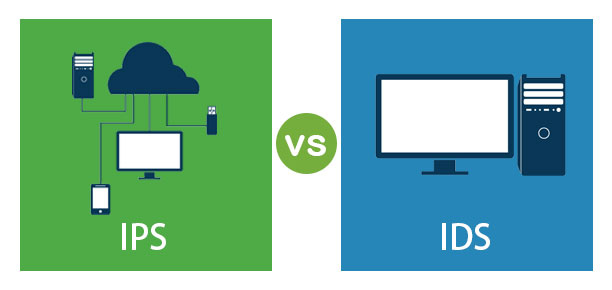IDS vs IPS: Key Differences for Cybersecurity
IDS vs IPS is a critical comparison in today’s cybersecurity landscape, especially as digital threats continue to evolve. Understanding the key differences between these two systems, along with firewalls, is vital for organizations aiming to strengthen their security posture.”IDS vs IPS vs firewall: What’s the difference and when to use them?” This article provides a detailed exploration of the functions, comparisons, and practical uses of Intrusion Detection Systems (IDS), Intrusion Prevention Systems (IPS), and firewalls—crucial components in modern cybersecurity frameworks.

ad
🔍 What is IDS (Intrusion Detection System)?
An Intrusion Detection System (IDS) is a passive security tool designed to monitor, detect, and alert IT teams of suspicious activities within a network or host environment.
Types of IDS:
| 🗂️ Type | 📝 Description |
|---|---|
| 🖥️ HIDS (Host-based) | Monitors activities like file changes and logins on individual hosts 🧑💻 |
| 🌐 NIDS (Network-based) | Observes network traffic to identify malicious patterns across the network 📡 |
ad
Detection Methods:
- Signature-based IDS: Detects threats by matching patterns against a database of known threats.
- Anomaly-based IDS: Uses machine learning or statistical methods to identify unusual activity.
- Hybrid IDS: Combines both methods for enhanced detection capabilities.
🔔 Upon detecting a potential threat, IDS generates an alert—but does not take any preventive action. This makes it especially suitable for environments where system availability is crucial, like in industrial control systems (ICS) or critical infrastructure.
🔐 What is IPS (Intrusion Prevention System)?
Unlike IDS, an Intrusion Prevention Systems (IPS) is an active security mechanism. It not only detects threats but also takes automated action to block, quarantine, or mitigate them in real-time.
Detection Techniques (similar to IDS):
- Signature-based
- Anomaly-based
- Hybrid detection
IPS is strategically placed in-line within the network to intercept potentially malicious traffic before it reaches its target. This makes IPS ideal for high-security environments, such as databases with sensitive financial or healthcare data.
🔥 What is a Firewall?
A firewall is a network security device or software that monitors incoming and outgoing network traffic and permits or blocks data packets based on a defined set of security rules.
Unlike IDS and IPS, firewalls do not rely on behavior analysis or anomaly detection. Instead, they function based on predefined rulesets—focusing primarily on traffic filtering rather than threat detection or prevention.
Types of Firewalls:
- Packet-filtering firewalls
- Stateful inspection firewalls
- Next-Generation Firewalls (NGFW)
📊 Difference Between IDS and IPS
| ⭐ Feature | 🕵️♂️ IDS | 🛡️ IPS |
|---|---|---|
| ⚙️ Action | Detects & alerts only 🚨 | Detects and blocks threats 🚫 |
| 🛠️ Deployment | Out-of-band (passive monitoring) 🔍 | In-line with traffic (active filtering) 🔌 |
| ⏱️ Impact on Latency | Minimal 🕐 | May add latency due to inspection ⏳ |
| ⚠️ False Positives | Alerts without blocking ❗ | Can block legitimate traffic mistakenly 🚷 |
| 🏢 Best Used For | High-availability environments 🧩 | High-security, sensitive data 🔐 |
| 🧰 Examples | Snort, OSSEC 🛠️ | Suricata, Cisco Firepower � |
⚖️ IDS vs IPS vs Firewall: When and Where to Use Them
| 🧰 Tool | ⚙️ Function | 📍 Placement | ✅ Best Use Case |
|---|---|---|---|
| 🔥 Firewall | Controls access based on IP addresses, ports, protocols | Network perimeter or endpoints 🌐 | General network access control 🧱 |
| 🕵️♂️ IDS | Monitors traffic, logs, and alerts for threats | Out-of-band sensor or appliance 🔍 | Monitoring critical systems without interrupting operations 🏥 |
| 🛡️ IPS | Detects and blocks malicious activity in real-time 🚫 | In-line with network traffic 🔌 | Preventing attacks before they affect systems 🧬 |
🧰 IDS and IPS Tools: Popular Solutions in 2025
Here are some trusted IDS and IPS tools used by enterprises and government bodies:
- 🔹 Snort (IDS/IPS hybrid)
- 🔹 Suricata (Multithreaded IDS/IPS/NSM engine)
- 🔹 OSSEC (Host-based IDS)
- 🔹 Cisco Secure IPS (Enterprise-grade prevention)
- 🔹 Zeek (formerly Bro) for network visibility and analysis
These tools offer scalability, real-time monitoring, and detailed reporting, making them highly effective in various cybersecurity infrastructures.
✅ Benefits of Using IDS/IPS Firewall Combination
Using IDS/IPS firewall solutions in tandem creates a multi-layered defense system:
- 🔐 Firewall blocks unauthorized access.
- 🔍 IDS detects anomalies and triggers alerts.
- 🚫 IPS takes immediate action against intrusions.
This defense-in-depth strategy ensures better cyber threat visibility, response agility, and compliance with cybersecurity regulations like HIPAA and PCI DSS.
❓ FAQs: IDS vs IPS vs Firewall
Q1. What is the primary difference between IDS and IPS?
IDS detects and alerts. IPS detects and blocks. IDS is passive; IPS is proactive.
Q2. Can you use IDS and IPS together?
Yes. Many systems, like Snort or Suricata, support hybrid functions. Combining them enhances detection and response capabilities.
Q3. Is a firewall the same as an IDS/IPS?
No. Firewalls filter traffic based on rules. IDS/IPS detect malicious behavior beyond basic filtering.
Q4. What are some IDS and IPS examples?
Snort (IDS/IPS), Suricata (IPS), OSSEC (IDS), Cisco Firepower (IPS), and Zeek (IDS).
Q5. Do IDS/IPS affect network performance?
IPS, being in-line, may slightly increase latency. IDS has minimal impact as it is out-of-band.
🏆 Conclusion: IDS, IPS, and Firewalls – A Unified Cybersecurity Approach
In 2025 and beyond, organizations can no longer rely on a single layer of defense. Knowing the difference between IDS and IPS—and how they complement a firewall—empowers IT leaders to build resilient, layered cybersecurity architectures.
For optimal protection:
- Use firewalls for perimeter security.
- Deploy IDS for visibility and threat alerting.
- Integrate IPS to prevent malicious actions in real-time.
Choosing the right combination of IDS/IPS firewall solutions—while considering your organization’s unique needs, risk profile, and performance requirements—is key to proactive cybersecurity.
ad


Comments are closed.